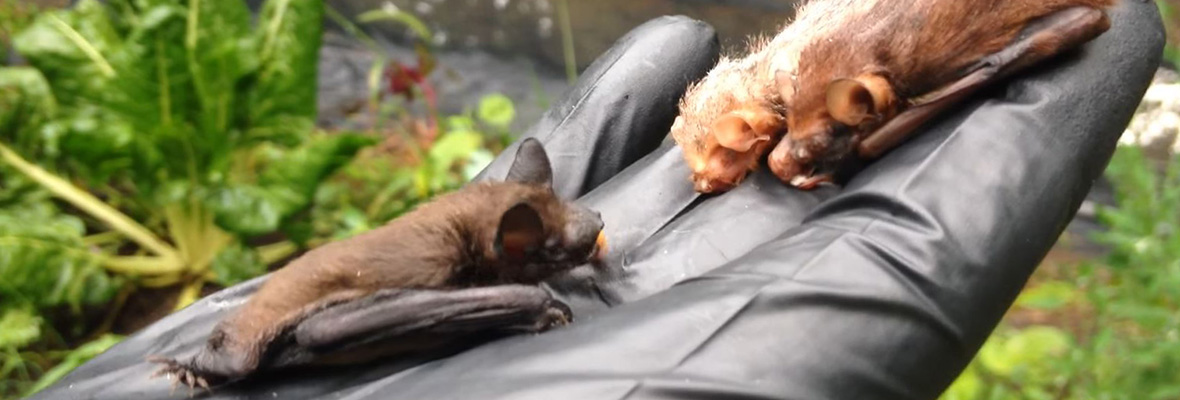Bat Exclusion Methods – 5 Tricks to Get It Right
Bat exclusion is the number one generally-recognized method of removing bats. It actually works, putting it ahead of things like repellents or deterrents. Those are often costly and come with no degree of success at all in many instances.
There are many benefits to using an exclusion method of removing animals, including bats, over other methods, such as trapping or using lethal force. There isn't a legal-to-use (or effective) poison on the market that you can use for bats, and most other forms of lethal force require licenses or permits, which often only come with appropriate training. The removal of bats – including using exclusion methods – is always best performed by a professional.

5 Tricks to Get Bat Exclusion Right
1 – Install devices at the end of summer or during the fall.
If you use exclusion devices or attempt to evict bats in any way during spring and summer, you are potentially risking the lives of every single bat baby in that colony. If those bat pups are not yet mature enough to be able to leave the nest, the exclusion devices will execute their death. With the mothers effectively locked out, the youngsters have no way of feeding themselves and will die after a few days.
Waiting until after the fall, when the weather turns chilly, is ill advised. Although some bat colonies will migrate to warmer climates for the duration of the winter season, many of them will stay put, choosing to sleep through the cold weather. It's almost like a state if hibernation, but with bats it is called torpor.
If you attempt to move bats during this period of torpor, you would need to wake them up first. The weather will be too cold for them, and they won't be prepared to wake up just yet. With very little food around it will only be a matter of time before the entire colony ends up dead. You could then face legal action for unlawfully moving bats.
2 – Seal up smaller holes, exclude on two or three larger ones.
Any female bat is going to try and get to her youngsters in the roost if you exclude them from the roost space. You will need to make sure that devices have been attached to the main two or three holes that the bats use to get in and out of your building. The remainder of the holes will need to be entirely sealed, totally preventing access. Although bats do not chew holes to gain access, they can flap around holes and make smaller patches of damage much bigger, therefore allowing them access.
3 – Make sure ALL bats are evicted.
This is the bit that many home and property owners get wrong – they don't check the building before removing the exclusion devices and finishing the sealing part of the job. If you leave just one bat in that attic, dead or alive, you have not yet gotten rid of the problem. The smell of that one bat alone will be enough to lure in other bats, and also potentially other nuisance wildlife too, including rodents.
4 – Don't DIY it.
Nobody likes to hear that someone else can do a job better, but in this case … well, someone really can do the job better. That someone is a specialist in the field of bat removal. If you make just ONE mistake, such as leaving one hole unsealed, you will go right back to square one again – the problem will be just as bad as when you first started, if not worse.
DIY jobs are usually much more expensive than calling in an expert bat removal technician, especially if you put your hopes into repellents or deterrents. These can be super costly for something that has absolutely no effect. Sadly, almost all bat repellents that you'll see on the market have absolutely no effects. Certainly not the kind of effects you'd be hoping for, that's for sure.
The longer you leave the bats in your attic, the bigger the pile of bat guano will get. On top of that, the more damage these animals will have the chance to cause. A couple of hundred bucks now might save you a few thousand bucks later on down the line.
5 – Make sure you protect yourself!
Listen, if you really want to play superman and do the job yourself, make sure you're being safe. Histoplasmosis, rabies, bat bugs – all things that you'll need to know about before performing any activity that brings you close to bats or bat material, including feces, urine, and other biological material. You can protect yourself against these by wearing thick, rubber gloves, eye protection and a breathing mask. You will also want to wear full coveralls that you don't mind disposing of once you're done.
If you're hanging out on the roof, you'll need a second person to make sure you don't fall down and break your neck. And yes, this could happen if you have a bit of a “dodgy roof” already. Isn't that why bats managed to get in, in the first place?
Go back to the Bat Removal home page or email us for more info about Bat Exclusion Methods – 5 Tricks to Get It Right

